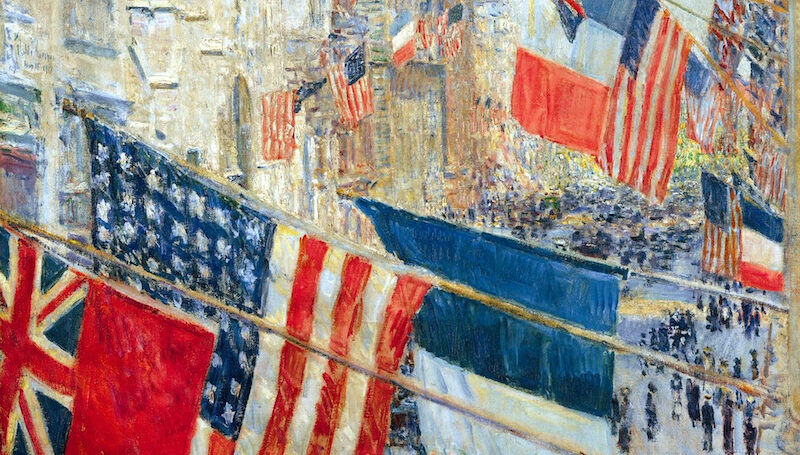Published on The Federalist
For the proud liberal, a quick thought experiment — or, rather, litmus test. Is the following group diverse? Four college students: one white, one black, one Asian, and one Hispanic. “Yes, of course,” you reply.
But what if I were to also note that these young adults hail from Bloomfield Hills, Michigan; Stamford, Connecticut; Brentwood, California; and Highland Park, Texas — towns located within what political scientist Charles Murray termed “SuperZips,” ZIP codes that rank highest based on a combination of income and education? Specifically, all four of our hypothetical subjects grew up in spacious suburban homes. They took tennis and golf lessons at local country clubs in the summer. They were handed keys to brand new — or relatively new — cars when they turned sixteen. All their parents are white-collar professionals, with at least one holding an advanced degree.
Drum roll. If you still feel the group represents diversity, you’re a subscriber to the 1960s-and-after Left. If your answer is an adamant, “No, this group is definitely not diverse,” you’re either an increasingly lonely living fossil or a time-traveling left-winger who’s arrived from an era prior to the emergence of the counterculture.
DIVERSITY IS FRAGMENTING DEMOCRATIC VOTERS
What started becoming evident with the dysfunctional nature of the Occupy gatherings has crystallized in the wake of grand jury decisions not to indict officers in the deaths of Eric Garner and Michael Brown. Indeed, a once-uneasy schism has become a rupture. The Left is divided — although far from evenly — between those who believe that “identity” is the engine of history and those who believe that class struggle serves the same function. Members of the latter cohort, concerned above all with tackling the wealth gap, are rapidly becoming an endangered minority. Economic inequality, once the traditional concern of the Left, is being eclipsed as the top priority by trendier matters. Jacobim Mugatu pulled it off with “Derelicte,” but middle- and upper-middle-class millennials have shown little interest in making poverty and paucity sexy.
To survey the history of the Left is to witness the carnivorous appetite of the Progressive spirit, an insatiable yearning to defy custom. Its sweeping trajectory is that of an ideological matryoshka doll, one nested figure recurrently swallowing the next. The movement swells, yet leaves little trace of the previously consumed constituency — that is except for the faint scent of resentment and cynicism. The labor activist was trumped by the female activist. The female activist was usurped by the black activist. The black activist was deposed by the LGBTQ activist. The LGBTQ activist is currently being dispatched by the Hispanic activist.
Thus, for the past century, the Left has been chopping itself up into fragments to appeal to a myriad of constituencies. Is there a point at which this penchant becomes politically self-destructive? There are already signs that the Obama administration’s progressivism is edging working-class white men, a key voting bloc, toward the Right. Obviously, such a shift could prove pivotal in the 2016 election. But more importantly, is there a deeper cost to having benched class, that which, by cutting across race, ethnicity, and gender, actually unites as opposed to separates? An old-school reformist will undoubtedly — and correctly — respond, “socio-economic mobility.”
HOW THE LEFT CAN UNITE ONCE AGAIN
Short of addressing culture, the Left ought to first revamp its attitude toward alternative methods of education. Children in economically depressed locales — urban and rural — must be provided greater connection to charter and private schools, places of learning where competition in the form of both reputation and salary drive student performance. With respect to life beyond high school, colleges and universities need to work harder to pursue genuine diversity and find the so-called “diamonds in the rough.”
Conservatives prudently champion equality of opportunity instead of equality of outcome. The former approach means boosting access to doors without then pushing the unwilling, uninterested, under-qualified, and unqualified through them. For too long, public institutions of higher learning have been content to pluck “minority” candidates from middle- and upper-middle-class America to check their diversity target boxes. Sending representatives into underrepresented areas and running outreach programs to encourage applications are expensive and time-consuming efforts. Yet they are precisely what will help bring about genuine and organic social advancement. If resources on campus are limited, funds can be diverted away from the “-studies” departments replete with aloof highbrows who pump out irrelevant, esoteric drivel.
It wouldn’t be too surprising if the modern Left, with its blinding infatuation with “diversity” grounded in race, ethnicity, and gender, eventually pushes even some of the most devout conservatives to consider the analyses of Karl Marx. The Left itself, however, may also wish to revisit its roots, not only for the sake of future admission to the White House, but also progress, its raison d’être. For class, not identity, has proven to be the universal fault line upon which seismic change occurs.
